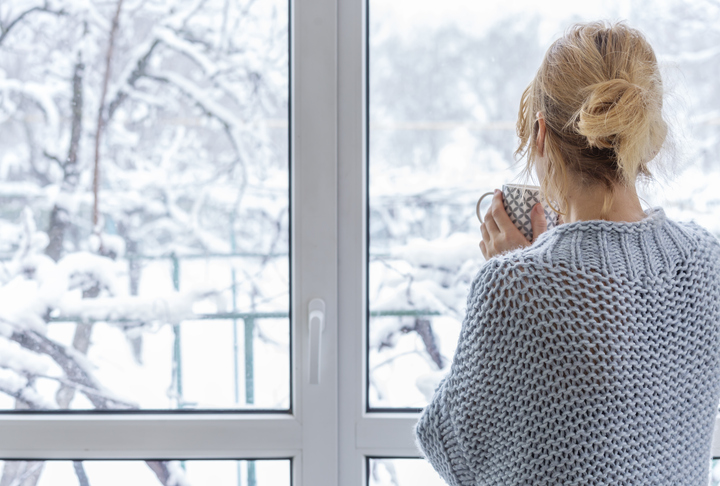Cold weather and shorter days can often make you feel less energetic and perhaps a bit down and worn out. Many people experience the winter blues, a common phenomenon when the seasons change from spring, summer, and autumn into wintertime. In most cases, these feelings are temporary, and there are some things you can do to feel better as the temperatures take a dip. Read on to discover how you can combat the winter woes at home so that this time of year isn’t always a bad thing. From practicing healthy self-care habits to using light therapy, beating the winter blues is possible. Read on for some tips that will help you say goodbye to those nagging winter blues once and for all.
What is winter blues or Seasonal Affective Disorder?
The psychological term for the winter blues is SAD, or Seasonal Affective Disorder. This term refers to a clinical diagnosis that many people experience due to having fewer hours of daylight each day. SAD can interrupt normal daily functioning and may worsen over time. The condition tends to appear as winter arrives and typically goes away a few months later when temperatures warm again by the spring and summer. Most people who experience Seasonal Affective Disorder are moody, lethargic, and generally feel down or depressed. While it’s not as severe as clinical depression, SAD can still negatively impact your daily life. You shouldn’t have to wait through winter to feel better, however. With some help and a few changes to your daily routine, you can beat those icky winter blues.
Why can you get depressed in winter?

There are many reasons why the winter season may make you feel depressed. If you love spending time outdoors, then colder temperatures and shorter days can get in the way of your normal routine. Cold weather often makes people stay inside, making them feel more isolated from family, friends, and the outside world. It can also make you feel depressed because you’re not getting as much vitamin D from natural sunlight. Vitamin D may help support a healthier outlook and improve mood, so it could affect your mood when you’re deficient in winter. Shorter days may also interrupt your body’s natural circadian rhythm, resulting in feelings of fatigue and sleepiness that can last for months. Lower energy levels can easily make you feel depressed and a bit run down.
What Are the Signs and Symptoms of Seasonal Affective Disorder?
Not everyone experiences Seasonal Affective Disorder, but there are some signs and symptoms to look out for. Some of these symptoms include:
- Feelings of depression that last almost all day and tend to occur every day
- Suddenly losing passion or interest in hobbies and other things you usually enjoy
- Experiencing feelings of low energy or having low energy levels
- Difficulty sleeping
- Changes in appetite and/or weight
- Getting annoyed or agitated more quickly than normal
- Feeling tired and sluggish during the day
- Trouble focusing and concentrating
- Feelings of hopelessness, guilt, or worthlessness
- In severe cases, some patients experience thoughts of death or suicide
If any of the above symptoms are intense or worsen over time, it’s best to talk to a professional healthcare provider. While these symptoms may sound scary, there are some things you can do to combat SAD or the winter blues at home. Taking these steps before winter arrives and then carrying them throughout the season is the best way to prevent Seasonal Affective Disorder from taking over your life.
Tips to Help Beat the Winter Blues

Fortunately, you can do things to help lessen the effects or even beat the winter woes altogether. Remember these tips to help you experience a much happier and healthier winter season.
- Take a Break from the News: In a world of 24/7 news, the headlines can easily start to become overwhelming and even a little bit depressing. Give yourself a break from watching or reading the news so that you’re not overwhelmed by too much information or scary, negative headlines. It’s OK to watch the news occasionally to catch up, but if you’re checking it too frequently, it’s best to limit your consumption of the news to help keep your head clear. Close all tabs besides the ones you need for work, and don’t turn on the news unless you absolutely need to. Read a good book or watch a funny movie if you must stay distracted.
- Eat Well: Consuming a healthy, balanced diet is one of the best ways to beat the winter blues. The lack of fresh produce during this time of year can make it a bit more difficult, so look for a range of healthy recipes you can try, like this potato salad. Fill your body with nutritious foods like fruits, protein, grains, and vegetables. Freeze summer fruits ahead of the winter so you can thaw them out and enjoy them during the year’s colder months, too. A healthy diet can make a big difference in how your body and mind feel. Also, Lack of exercise, smoking, and a bad diet are all variables that contribute to significant reductions in the amount of work you can get done in a day.
- Exercise: Just because it’s cold outside doesn’t mean that you can’t enjoy regular exercise. Consider enrolling in a Pilates or yoga class you can take at home or join your local gym to help you stay in shape. If you don’t mind going outside in the winter, bundle up and take regular walks around the neighborhood. Find an exercise buddy you can work with and who will help hold you accountable. Staying active is another great way to avoid feeling down and depressed since physical activity can help to increase your brain’s serotonin and endorphin levels. It’s also a great way to keep you fit and in shape until spring arrives again.
- Keep Up Your Sleep Routine: Getting ample sleep is key in beating the winter blues. Stick to a regular schedule where you go to bed and wake up simultaneously each day. If you need to unwind before bedtime, turn off your devices and read a good book instead. Use an eye mask, turn on some white noise, and bundle up under warm blankets so you sleep soundly through the night. Try to stick to the same sleep schedule you have during the week on the weekends to keep your body clock running smoothly.
- Take Vitamins: A quality multivitamin can help to fill in any nutritional gaps you might have during the winter. Consider supplementing with vitamins like zinc and vitamins C and D since they can help to boost your immune system and prevent sickness. You can also supplement with powdered mixes to add to yogurt, smoothies, or your coffee to help improve your energy levels and mood. Before starting a new supplement routine, talk to your doctor, especially if you’re taking prescription medications.
- Outdoor activities: Spend time outside during the winter as often as possible to stay active and healthy. You can go skiing, snowboarding, or ice skating if you live in an extremely cold area with snow or ice. Make sure you dress in warm layers, and then get outside and enjoy the beauty of winter. Even if it looks cloudy or gloomy, you’re still getting natural light that will help support a healthy circadian rhythm. Just a simple walk around the block each day will help you stay active and give you a few minutes of outdoor time.
- Indoor hobby: Try your hand at a new hobby you can do indoors. Whether it’s painting, sewing, or arts and crafts, this is an excellent way to keep your hands and mind occupied. Set aside a bit of time each day to work on your hobby to help you experience some feelings of accomplishment. Look for some online classes you can enroll in to help you learn how to paint, sew, or make ceramics. You may just discover a hidden talent you never knew you had. If you have the space at home, designate an area dedicated solely to your hobby so that it becomes a regular habit and part of your routine.
- Decorate your home: Elevate your mood this winter by decorating your home with some cheerful artwork and other items that make you smile. If the colors in your home feel dark or drab, it’s also a great time to consider painting the walls in a new, lighter color. Look for items that make you feel happy and fill your home with them. You can pick between different indoor plants that will give you a boost of serotonin by taking care of them. Simply changing your environment through the décor in your home can instantly boost your mood and improve symptoms of Seasonal Affective Disorder.
- Get professional help: If you have tried all of these tips and still don’t feel better, it might be time to seek professional help. A licensed therapist can help you work through any difficult feelings you may be experiencing. There’s no shame in asking for help if you need it. You may need to take some prescription medication temporarily until the winter blues have passed.
Light therapy for preventing seasonal affective disorder

Light therapy uses light to help combat mental health issues like Seasonal Affective Disorder. Read on to learn how to use this form of therapy at home and how it may help you cope.
- What is light therapy? This type of therapy utilizes light to help you increase the amount of exposure to light during the day. Scientists have found that the lack of exposure to sunlight during the day is one of the most significant factors for SAD during the winter. With light therapy, you’ll increase your exposure to light, which may improve your mood and energy levels.
- How does it work? You can do your own light therapy at home with a lightbox or a special light therapy lamp. Sitting close to the light allows some time for the eyes and skin to absorb the light without looking directly at it. Ideally, you should be between one and two and a half feet away from the lightbox to get the best results. This light emits a bright light that mimics sunshine to help boost levels of serotonin, melatonin, and vitamin D. All of these things work together to help improve things like mood, sleep, and the immune system.
- Benefits: There are many benefits to using light therapy, including improving mood, fewer or less frequent feelings of depression, and better sleep. While the benefits may differ from one person to another, light therapy has been shown to be fairly effective at helping to combat the symptoms of Seasonal Affective Disorder and mild depression. Other benefits may include improving energy levels so that you feel less fatigued throughout the day.
- Types of Light Therapy Devices: Most light therapy devices come as a lamp you can place on a bedside table or a lightbox. These devices emit a high level of light that replicates the same brightness you’d get from natural sunlight. Light therapy devices emit different amounts of lumens, which is a measurement of light. Ideally, you should choose a lightbox or light therapy lamp that produces a minimum of 5,000 to 10,000 lux of light. The smaller the device, the longer you’ll need to use it each time to get the best benefit.
Although feeling the dreaded winter woes is common for most people, it doesn’t mean you have to suffer during this time of year. With some proper self-care like getting exercise, plenty of sleep, eating a healthy diet, and trying a new hobby, you can beat the symptoms of Seasonal Affective Disorder. Keep these tips in mind this winter, and you’ll adopt some new healthy habits that will last a lifetime.




